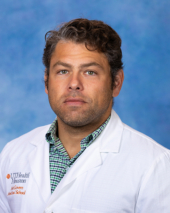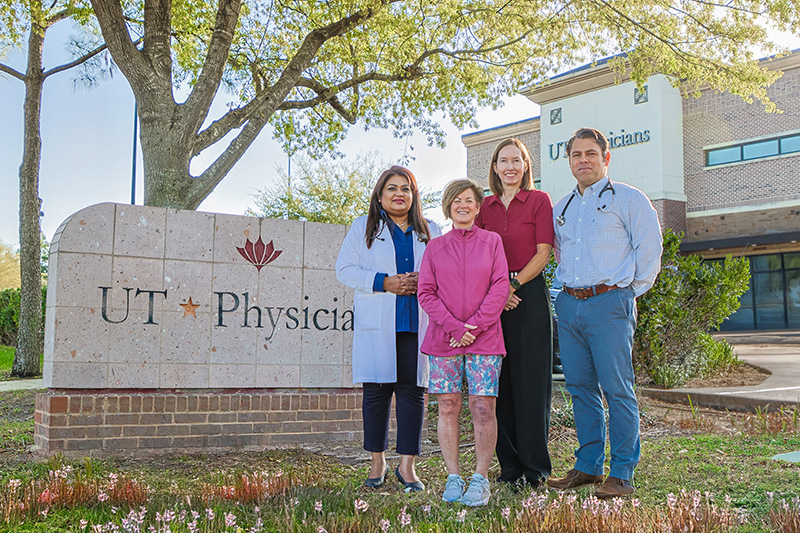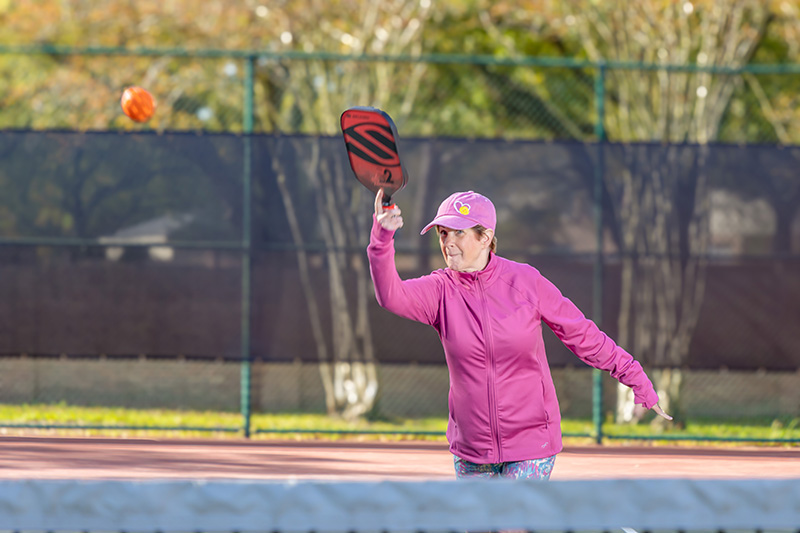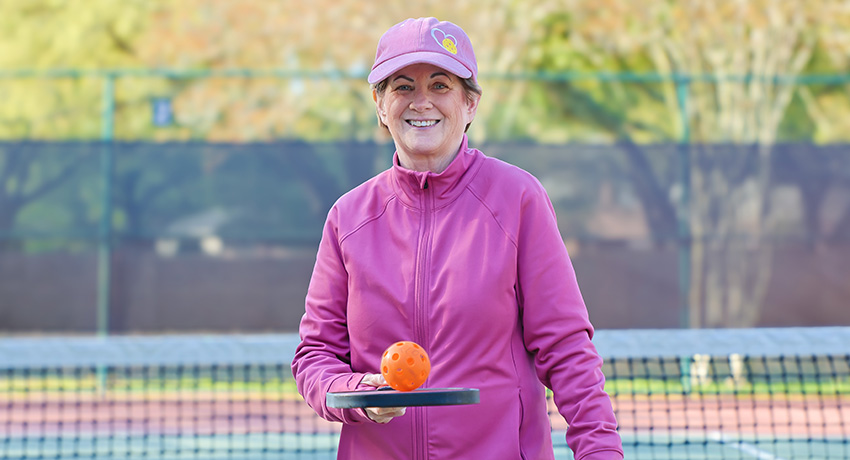Robin Orbin knows her way around the pickleball court. What she didn’t know when she began playing is that it would spark a remarkable health turnaround.
“I just love pickleball,” she said while holding a signature plastic ball dotted with perforated holes. “I took an intro class at my community center, and I’ve been hooked ever since.”
She credits the social sport with getting her into the doctor’s office for the first time in five years.
“I had a bad knee, and playing pickleball really made me pay attention to it,” said Robin.
A friend referred Robin to George V. Golod, MD, a family medicine physician with UT Physicians Multispecialty – Cinco Ranch.

Type 2 diabetes diagnosis
“We did some routine blood work and discovered she had severely uncontrolled Type 2 diabetes,” said Golod.
Type 2 diabetes occurs when the insulin in the body is not properly regulating blood sugar levels. Uncontrolled diabetes means sugar builds up in the blood, which can lead to loss of vision, kidney damage, heart damage, and diabetic ketoacidosis, a life-threatening complication where acid builds up in the blood.
Risk factors for Type 2 diabetes include obesity, family history, sedentary lifestyle, and ethnicity. American Indians, Hispanics, and Southeast Asians develop Type 2 diabetes at a higher rate than other populations.
A1c test
The blood work included testing Robin’s A1c levels. This test captures a three-month snapshot of the body’s blood sugar levels.
“A healthy A1c level is below 7, but Robin’s was above 14, which is considered dangerously elevated,” said Golod.
“I knew it was going to be high,” said Robin. “I’d been dealing with grief from my brother’s sudden death. I was eating poorly and gaining weight. In fact, that’s why I stopped going to the doctor years prior. I was embarrassed about my weight.”
Collaborative treatment
There’s no cure for Type 2 diabetes. It’s a lifelong diagnosis that can carry a negative stigma. Aware of the emotional toll, Golod worked in collaboration with other care team members to cast a wide support net for Robin.
“We are here to minimize the shame and stress that can accompany this diagnosis. Sharing this information is a gentle dance,” said Golod. “We work to empower our patients, not overwhelm them.”
Golod prescribed a low dose of daily insulin along with a common antidiabetic medication.
He referred Robin to Sayeeda Bilkis, MD, an endocrinologist, and Katherine Gerber, RD, a certified diabetes care and education specialist at UT Physicians Multispecialty – Cinco Ranch.

Lifestyle and diet change for Type 2 diabetes
“Controlling your diabetes and lowering A1c is not as simple as just reducing sugar intake,” said Gerber. “It is a multipronged approach that involves exercise, food, medicine, and regular blood sugar testing. All of these components work together to lower A1c.”
Type 2 diabetes treatment requires patients to check their blood sugar, also called glucose level, daily.

Robin chose to wear a continuous glucose monitoring device to track her blood sugar in real time. She combined that with a food journal to compare how certain foods impacted her glucose level.
“I remember one time she adjusted the number of grapes she ate for a snack because she could see them impacting her glucose level,” said Gerber.
Robin made small changes that had a big impact. She replaced pasta with other whole-grain, high-protein carbohydrates. She tracked her portions and replaced soda with water.
“The food in my fridge and pantry are all geared toward my health goals,” said Robin.
Pickleball was part of her treatment. Robin ramped up her exercise, playing pickleball three to five days a week for three hours at a time and added daily walking.
“I go on several walks every day for a half mile each,” said Robin.
Lowering A1c levels and controlling blood sugars is not a one-time fix for Type 2 diabetes.
“These changes Robin made are lifelong. We are not promoting restrictive eating or dieting because that is not sustainable. We are promoting a change in habits, like balanced eating, more exercise, and blood sugar awareness,” said Gerber.
Insulin as an intervention
Within two months of being diagnosed with severely uncontrolled diabetes, Robin was able to wean off her insulin prescription.

“Many people think of insulin as a last resort for Type 2 diabetes,” said Bilkis. “It is not. It is an intervention. Robin is a great example of using insulin to get her diabetes under control.”
The work Robin put in paid off. Her A1c level fell to 9.6 in just one month, then to 6.9, and then to 6.2.
“An A1c level under 7 means her diabetes is under control, and she no longer needs an insulin prescription,” explained Bilkis. “This is possible for most people diagnosed with Type 2 diabetes. It takes lifestyle modification, but it’s doable.”
Comprehensive care under one roof
Robin’s long-term care for diabetes includes regular follow-up appointments and blood work, all with the doctors and in-house lab at UT Physicians Multispecialty – Cinco Ranch.
“That whole facility is just awesome,” said Robin. “You can tell how invested every single employee is in your health. I love having everything in one place.”
“We all work within steps of each other,” said Gerber. “Not only do we see each other daily, but we’re communicating every day, too.”
“A team effort allows us to deliver the same message in different ways,” said Golod. “That layered approach builds patient connection and trust, ultimately yielding better health outcomes. I am proud of what Robin accomplished for herself.”
Ace serve returned
Robin wasn’t going to let her diabetes diagnosis take her out of the game. She doubled down on her priorities: exercise, food choices, and blood sugar monitoring. She lost weight and incorporated fun into her lifestyle changes.
“I got myself into this, and I knew I would have to get myself out of it,” said Robin. “My indoor pickleball club saved my life, and my team at UT Physicians cheered me on the whole time.”



